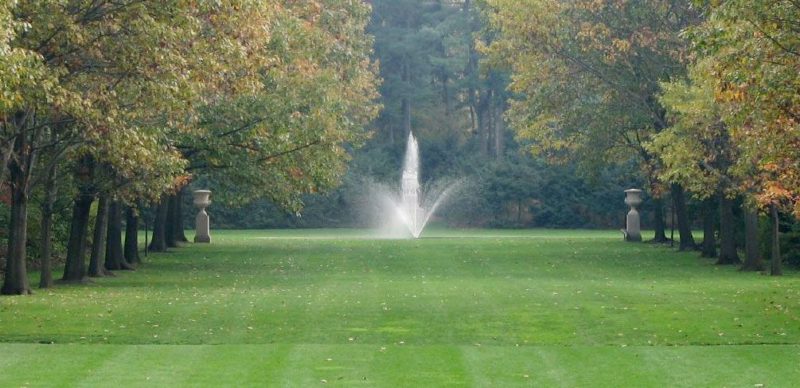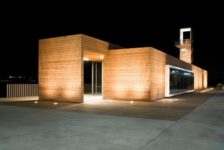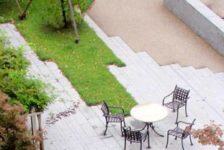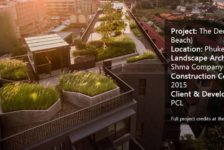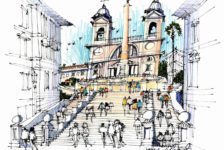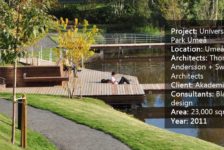Are you taking lawns for granted? Do you just implement them from an esthetic point of view with no regard to the environmental aspects of it? In this article, we take a deeper look as to what designing lawns really means. Turf grass is perhaps the most prevalent plant used in Western public and residential space alike. It’s always in a designer’s back pocket as a quick way to create multi-use space. But good designers think about the long-term effects of their projects, and traditional lawns can be a bad idea. Their maintenance sucks resources, helps decimate ecosystems, and wastes money.
Here are some reasons to stop designing lawns:
1. Turfgrass is the most irrigated crop in the United States According to a 2005 NASA Study, irrigated turf grass accounts for three times more land area in the United States than corn. American residential landscapes consume about 9 billion gallons of potable drinking water per day, about half the amount of water used in a given house per day. In hot climates such as America’s Southwest, an average of 60% of a single house’s water use goes to landscape irrigation.
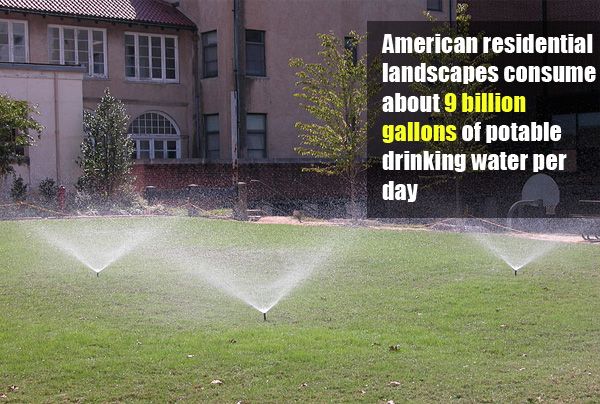
Lawn sprinklers in operation at the North Carolina School of Science and Mathematics in Durham, North Carolina. Photo credit: Ildar Sagdejev. Licensed under CC-SA 3.0
Traditional lawn care practices account for
70 million pounds of pesticides used in the U.S. every year. And pesticides cause serious environmental problems. Killing all the bugs, not just the bad ones, turns surrounding ecosystems into an unbalanced mess. Pesticides and fertilizers also pose poisoning risks for humans and other non-target species.
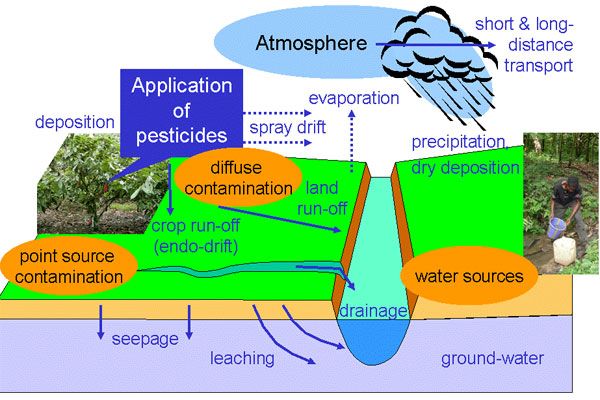
Environmental contamination with pesticides. Image credit: Roy Bateman at English Wikipedia. Licensed under CC-BY-SA 3.0
We know that a well-designed site should be used for many different purposes, and a lawn that is primarily decorative is a wasted opportunity. Lawns are great for unprogrammed use of outdoor space, but admit it — you’ve seen great swaths of meticulously mowed, green people-pasture that is completely empty most of the time. It may be pretty, but can’t we do better?
Related Articles:
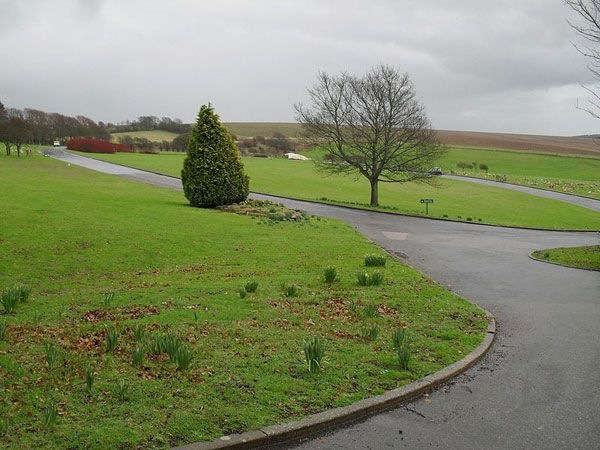
Should this space be repurposed?
Image: General view across the Lawn Memorial Cemetery, Warren Road, Woodingdean, City of Brighton and Hove, England, looking southeastwards into the cemetery. Image credit: The Voice of Hassocks. Licensed under CC-SA 0
Similar to pesticides, fertilizer runoff into the surrounding waterways also causes big, fat
problems for ecosystems. The excess nitrogen in water systems, such as ponds or streams, causes algae to grow out of control. The thick algae soak up all of the available dissolved oxygen in the water and drowns fish and other marine life that need oxygen.
5. Decreased biodiversity Besides poisoning by pesticides and drowning by fertilizers, birds, bugs, and bacteria all thrive better in
a diverse mix of species. Human-maintained monoculture causes problems for animals that eat native plants, moving them out of old habitat or providing them with less nutritious food. Monoculture also supports overpopulation of animals that eat the one thing we let survive.
6. Maintenance Unless your maintenance personnel are out every week mowing that lush carpet with push mowers, a lot of energy is being consumed to keep your lawn so trim. Using a standard lawn mower for one hour creates as much pollution as
driving a car 100-200 miles in average conditions. A string trimmer is even worse — but it’s worth it for those clean edges, right?
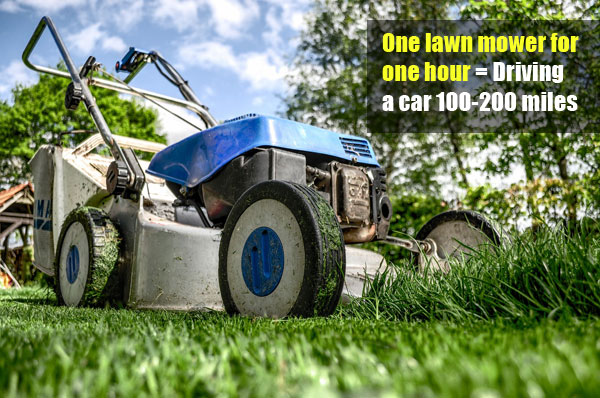
Can you believe it?
Image license: CC0 Public Domain
Extra nutrients? Leached soils? Monoculture and plenty of water to spare? Sounds like the perfect place for
invasive species to call home. They can be kept at bay with constant maintenance, but skip the mowing and weed-eating for a week and the lawn can turn into an invasive wonderland.
8. Status quo bias is going out of style, anyway The American love of the front yard has caused lawn size to grow larger and larger since World War II. A giant lawn makes a house look like the inhabitants can afford to waste space, water, and maintenance hours that could be used for growing something edible. It’s really time to move past that mindset, don’t you think?
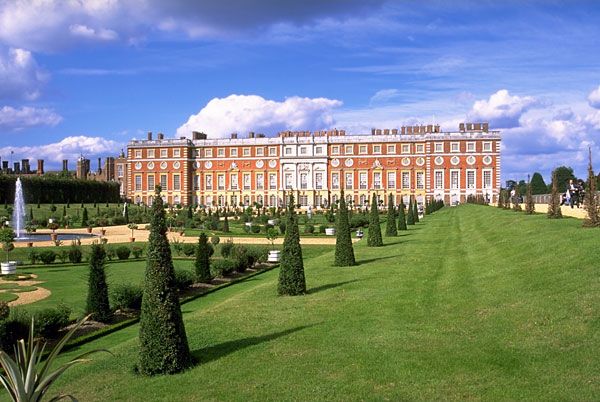
Is the manicured lawn going out of style? Image: Christopher Wren’s south front built for William and Mary viewed from the Privy Garden. Image credit: Andreas Tille. Licensed under CC-SA 3.0
Two Reasons to Keep Designing Lawns
1. Sightlines and safety Urban parks face safety problems. The more people using a public space, the more safety should be forefront in the minds of the designers. Turf grass is a flat groundcover that when mixed with trees with high branches creates great sightlines all through the space. Removing mid-height shrubs and adding flat pavers or ground covers was one of the strategies used in the monumental Bryant Park, New York City safety remodel.

New York – Bryant Park. Image credit: Jean-Christophe BENOIST. Licensed under CC-SA 3.0
Because of the aforementioned reasons, lawns are going out of style anyway. But for a multifunctional recreation space that promotes ecological biodiversity, native plant growth, and a reasonable amount of irrigation, some designers are turning to native
prairie grasses. The mixes are mowed once every few weeks, already reducing
pollution due to maintenance. Yes, they look messier, but that messiness hopefully heralds the dawn of an age of better ecological landscapes.
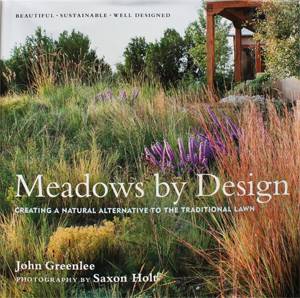
Read our book review HERE!. Front cover; credit: Marta Ratajszczak
Lawns are a ubiquitous part of landscape design history; they are classic and so normal that most don’t think twice about adding one into a design. But it is time to pull this go-to tool out of our back pockets and seriously evaluate it with 21st-century data. Is it responsible to design a lawn when I know the damage it can cause? What is a better alternative for multifunctional use? How can spaces be designed to encourage sustainable maintenance? Article by Caitlin Lockhart
Recommended Reading:
Featured image credit: By Tonamel. Licensed under CC-SA 2.0
Published in Blog









